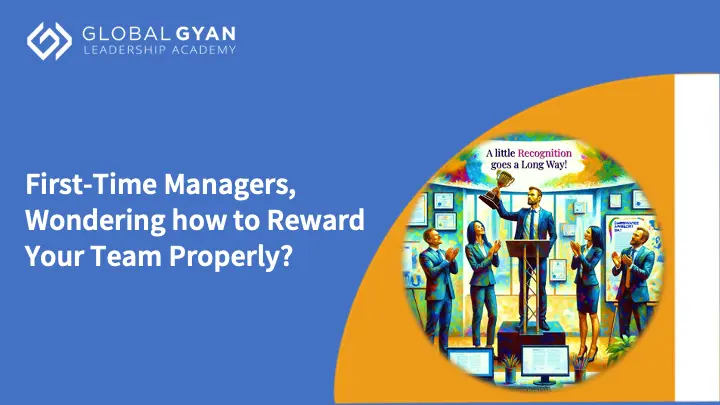How can Managers keep Team Burnout at bay?


The “always on” work culture has led to some serious burnout among white-collar workers today. According to a recent study by Deloitte, over 70% professionals felt that their employers were not doing enough to assuage their burnout woes, which was adversely impacting their performance. The burnout is aggravated among millennials, where 84% of the respondents said that they experienced burnout in their current jobs (as opposed to 77% of the rest) and half of them even ended up leaving their jobs due to severe corporate fatigue (as opposed to 42% of the rest). Seems like a true litmus test for managers.
Think about it, at the beginning of a project, everyone is brimming with ideas, eager to put their best foot forward. However, sustaining good performance over the course of a long project, or as a team works on multiple projects together—that’s where the real challenge arises for a manager. In addition to burnout, complacency may also start to set in, forcing you to change things up. In short, you need to be on your toes all the time.
In this article, we will cover:
A participants enrolled in one of our programs once shared with us, “The life of a manager… It’s a never-ending maze of challenges; where one ends, another pops up. But, over time, I have discovered various frameworks that have made my life (and work) easy. Had I not stumbled upon them when I did, I would’ve tapped out much sooner!”
For most adults, the majority of waking daily life is spent at work. That offers employers an opportunity to influence their employees’ physical, mental, social, and spiritual health.
For seasoned managers, it is not just enough for the team to perform exceptionally in one small, medium or large-scale project. The intensity and work ethic needs to be replicated day after day, sprint after sprint and project after project. All the while adapting to different types of stakeholders, fulfilling a multitude of requirements, overcoming numerous challenges and assimilating ad-hoc skills, among other things. And only one individual is in-charge of this laborious process: the invisible, indispensable manager. So here are three dynamic frameworks that will help you, as a seasoned manager, to sustain your team’s performance.
1. 360-degree Feedback
Traditionally, feedback was provided once a year from the manager to the team member; a one-way street in the top-down direction. Feedback also carried a negative connotation, often being viewed as a dreaded exercise that one wanted to simply “get done with”. However, the tides turned with the changing times. Now, feedback is seen not just as a one-time event, but a continuous loop. In fact, more than sixty percent of Gen-Z professionals expect their superiors and direct reports to check-in with them on a weekly basis! But these don’t need to be extravagant—a concise five-minute chat would suffice (rather, they’re preferred, studies show).

The 360-degree Feedback framework facilitates this and much more. Think about it – your team works with multiple people on a daily basis. These interactions can be inter- as well as intra-functional in nature. They might report to you in principle, but their work is not limited to the tasks you assign to them solely. For instance, if a team member encountered a roadblock in the process of completing a task and needs external intervention—say that of a stakeholder’s in particular—then you, as their manager, would hardly be in position to help them in a meaningful way. Once the roadblock is resolved, the stakeholder would be in a better position to assess how your team member performed in their role, the extent to which they went to resolve minor issues and how efficiently they employed their soft skills to expedite the resolution process, and so on.
360-degree feedback provides your team members with holistic and continuous feedback not only from you but also from those around your team, who work with your team or are impacted by their work in one way or another. This may include managers, peers, direct reports, stakeholders and even customers, in some cases. And the icing on the cake? These evaluations are completely anonymous!
For your team members, 360-degree feedback helps with increasing self-awareness. Oftentimes they may wonder why they’re being cornered or have been asked to skip a meeting with the CEO at the last minute. With 360-degree feedback, such nuances come to the surface, invoking a certain degree of introspection and mindfulness in an individual. However, these surveys need to be administered in a meticulous manner, ensuring that leaders are as involved in the process as subordinates and peers. Several studies have shown how this feedback model has helped to increase team engagement and productivity and lowered employee turnover.
2. 70:20:10 Model
Remember way back in school, we were told that the application of concept was as important as its theory? Well, the 70:20:10 model (also stylised as 70-20-10 and 70/20/10) puts this to test.
In the 80s and 90s, researchers at the Center for Creative Leadership conducted studies to propose the 70:20:10 model which categorised the sources of corporate learning into three broad buckets viz. on-the-job training (or experiential learning), mentoring (or social learning) and formal training/learning. Furthermore, they used empirical evidence to posit that working professionals learned the most through on-the-job training/experience (70%), followed by interacting with peers or superiors in a mentoring/collaborative setting (20%) and finally, through formal training programmes (10%).
Employees are constantly looking to learn and grow in their jobs, and the 70:20:10 model facilitates continuous professional development. Therefore, the model has found credence in the past. However, recent debates on the advantages of formal vs. informal learning have cast doubts on its efficacy. But the good news is that the weights of the buckets can be optimised to you (and your team’s) requirements.
For example, if your project requirements are far too dynamic, then your team can benefit from more ad-hoc coaching than, say, formal training. Therefore, you up the former metric (the middle bucket) from 20% to 30, or even 40%, while the latter (the third bucket) gets relegated to the background. Similarly, if you’re managing a team that’s working on “the next best thing” in your domain, then they may require far more formal training as opposed to experiential or social.
Remember, there is no hard and fast rule on how to implement the model; play around with the settings until something finally clicks for you. What’s important here is that your team is as involved in this process as you or your superiors, giving them ample opportunity to evaluate their needs and determine the corresponding value or impact of each of these buckets—which may or may not align with your own assessment!
3. Pomodoro Technique
One of the most important aspects of a high-performing team is time management. We often hear teams lament over how “there’s so much work and so little time”! Therefore, this article would be incomplete without us exploring at least one such tried and tested technique that helps you (and your team) manage your time efficiently, and therefore directly impact your overall productivity.
The Pomodoro Technique, developed by Francesco Cirillo in the late 80s, advocates using short breaks between and within tasks to maintain focus and thereby, churn high-quality work consistently. So, the next time your team member needs to meet a deadline on a deliverable, ask them to split their time as follows:
- Break down a task into short 25-minute sprints, called a Pomodoro or “tomato” in Cirillo’s native Italian.
- Focus solely on the task in hand during these 25 minutes. Set a timer if that helps. Avoid distractions like checking emails and social media or getting side-tracked.
- After each sprint, take a 5-minute break to indulge in light activities like taking a walk, grabbing a sip of water or solving a Wordle.
- Then repeat another cycle four more times.
- After the fourth cycle, take a longer break of 15-30 minutes—take a nap or work on a passion project—to recharge your batteries.
One of our participants used this technique when their team started getting complacent midway a critical project and reported the results back to us, “The Pomodoro technique has been a game-changer for me. My team interacts a lot more with each other and look less stressed! This crafty tool has helped boost their productivity has increased by 25%”.
So there you have it! Three frameworks to ensure that your team is on track 24×7 in the long run. Have your tried any of these strategies? Let us know which one(s) got your team fired up the most.







